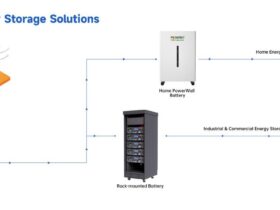As the world of technology continues to rapidly evolve, two groundbreaking disciplines—artificial intelligence (AI) and data science—are emerging as major forces for innovation. AI and data science have the potential to revolutionize many aspects of human life by offering unprecedented insights into complex problems through advanced analytics and machine learning. But what exactly is the difference between the two fields?
What is Artificial Intelligence(AI)?
Artificial Intelligence (AI) is a rapidly growing technology that is changing the way we interact with computers and other machine systems. AI has been around since the 1950s and continues to revolutionize our world by allowing machines to think, reason, learn, and act autonomously. AI has also become increasingly more accessible in recent years due to faster processing speeds and increased computer memory.
At its core, AI is an interdisciplinary field of technology that seeks to create intelligent machines capable of performing tasks that would normally require human intelligence. This includes problem-solving, learning from experience, understanding language and speech recognition, as well as decision making. AI enables machines to simulate the workings of a human mind by using algorithms to interpret data sets and enable those machines to take action based on what it learns from this data.
What is Data Science?
Data science is a rapidly growing field that combines the principles of computer science, mathematics, and statistics to understand data. It’s used by organizations across industries to gain insight from large amounts of data and make predictions or decisions based on their findings. Data scientists explore complex datasets to discover trends and hidden patterns in order to inform and improve business strategies.
Data scientists use programming languages such as Python, R, Java and SQL to develop algorithms for machine learning projects that can sort through vast swathes of raw data. They also work with statistical models like linear regression or logistic regression which allow them to analyze data more efficiently than traditional methods. Data scientists must have an understanding of business processes so they can interpret the results of their analyses to provide valuable insights that decision-makers can act on. Become a Data science Certified professional by learning this Data science Training !
How are data science and artificial intelligence different?
Data collection is an important part of both artificial intelligence (AI) and data science. AI relies on the vast amounts of data that can be collected to create algorithms and make decisions; similarly, data science leverages large datasets to uncover insights and generate predictions.
Data collection
For AI, the more inputted data available, the better it can become in understanding its environment or task. For example, a machine learning algorithm will benefit from having a large set of labeled training examples that it can use to recognize patterns. Data scientists are also reliant on large amounts of data for their analyses. Through statistical techniques such as regression analysis and clustering, they look for patterns in datasets which then help inform business decisions or identify areas where improvements could be made.
Learning techniques
In recent years, the field of artificial intelligence (AI) and data science have been gaining prominence due to their potential to revolutionize industries. While AI and data science are related fields, there are some fundamental differences between them. To understand the differences better, let’s look at some of the techniques used in each field.
When it comes to AI, researchers use methods such as deep learning and natural language processing to enable machines to function without being explicitly programmed. Deep learning involves training a computer system using large amounts of high-level data from various sources in order to identify patterns and make decisions with minimal human intervention. Natural language processing enables machines to understand spoken or written human languages, allowing for more natural interactions between humans and computers.
Decision making
The debate between artificial intelligence (AI) and data science is a hot topic in today’s tech-driven world. As organizations increasingly rely on technology to make decisions, it’s important for leaders to understand the difference between AI and data science.
Data science encompasses a variety of techniques used to analyze large amounts of data from various sources in order to gain insights into trends or patterns. It involves gathering, cleaning, transforming, and manipulating datasets in order to derive useful information. AI, on the other hand, focuses on teaching machines how to think like humans by using algorithms that enable them to learn from past experiences and adapt their behavior accordingly.
By understanding these two fields of study, decision makers can leverage both technologies when making strategic decisions. Data science offers powerful insights that can inform business strategy while AI provides tools for automation that help streamline processes and increase efficiency.
Application areas
The application areas of artificial intelligence and data science have become increasingly intertwined as technology advances. As a result, the distinction between them has been blurred. Artificial Intelligence (AI) refers to the simulation of human intelligence processes by machines, such as problem solving or decision-making. Data science is focused on extracting knowledge from vast amounts of data using methods such as machine learning and deep learning algorithms.
AI and data science work together to enable machines to interpret large volumes of data in order to make decisions or predictions. AI can be used to build intelligent systems that can analyze large datasets more efficiently than humans are able to, while data science techniques can be used to uncover insights from those datasets that help drive business decisions or optimize processes.
Does artificial intelligence require data science?
Data science and artificial intelligence (AI) are two closely related but distinct fields. AI is the broader area of study which focuses on simulating intelligence and behavior in machines, while data science encompasses numerous techniques to extract useful insights from large datasets.
As such, data science plays an important role in AI by helping to uncover patterns in the data that can be used to train algorithms. This includes techniques such as natural language processing (NLP), machine learning, deep learning, clustering analysis and more. Without these methods, AI systems would not have the capability to achieve their goals and solve problems.
However, it is important to note that data science is not a prerequisite for all types of AI applications.
Final Note:
In conclusion,Artificial Intelligence Vs Data Science are two distinct yet complementary disciplines that can be used to understand and manipulate data. AI is essential for uncovering patterns and predicting outcomes, while data science provides the necessary tools for collecting, organizing, and interpreting data. AI and data science can be used together to create powerful solutions for businesses, governments, and organizations. By understanding the differences between Artificial Intelligence and Data Science, organizations can better leverage these technologies to their advantage.










Leave a Review